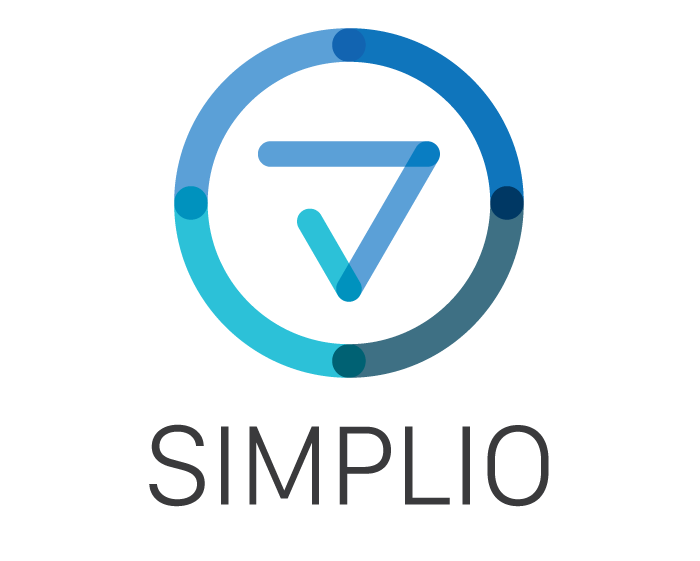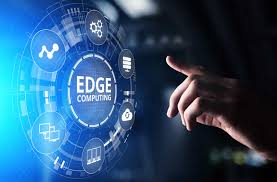Edge computing is critical for many IoT applications, enabling lower latency and decreased bandwidth usage. However, most people miss one of the most important benefits of Edge computing when it comes to IoT.
Before we get to this key, overlooked benefit, let’s define both Edge computing and Cloud computing.
Before the age of Cloud computing, organizations had to buy their own physical servers to get the computational power and storage they needed. This was expensive upfront (to buy all the hardware and set it up) and expensive to manage (to maintenance and update). Cloud computing means that businesses no longer need to purchase and manage the hardware. The business can pay for what it needs, and the Cloud provider takes care of management.
Cloud computing has profoundly impacted, providing scalability, reliability, security, and ease-of-use to businesses. However, Cloud computing isn’t perfect and comes with tradeoffs.
Cloud computing is centralized, which means that no matter where the end-device (e.g., your smartphone) is located, data needs to travel from the end-device, over a network (e.g., a 4G cellular connection), to the data centers of the Cloud provider. And then do that again in reverse to reach the end-device. For applications that require a lot of data to be transferred quickly, this can be both slow and expensive.
This is where Edge computing comes in. To understand the benefits of Edge computing, autonomous vehicles are often cited as an example:
- Latency: Autonomous vehicles need to make split-second decisions. If a car swerved in front of you, would you want your vehicle to have to wait to get instructions from the distant Cloud? No! You want your car processing on its local computer to make a decision as fast as possible.
- Bandwidth: Autonomous vehicles capture a LOT of data estimated at 4 Terabytes per hour of driving. Compare that to the average of 100 Megabytes per day for your smartphone, and that’s 40,000x the data. Streaming all this data would be both expensive and could lead to network congestion.
For both of these reasons, it makes sense to perform computation at the Edge (in this case, on the vehicle itself) for autonomous vehicles.
The question of Cloud computing and Edge computing isn’t a question of which to use. Both Cloud and Edge have their strengths depending on the context. The question to ask is when to use Cloud computing vs. Edge computing.
A helpful rule of thumb is this: “Cloud computing operates on big data while Edge computing operates on ‘instant data’ that is real-time data generated by sensors or users” (Wikipedia).
What is the “Edge” Exactly?
The Edge basically means “not Cloud” because what constitutes the Edge can differ depending on the application. To explain, let’s look at an example.
In a hospital, you might want to know the location of all medical assets (e.g., IV pumps, EKG machines, etc.) and use a Bluetooth indoor tracking IoT solution. The solution has Bluetooth Tags, which you attach to the assets you want to track (e.g., an IV pump). You also have Bluetooth Hubs, one in each room, that listens for signals from the Tags to determine which room each Tag is in (and therefore what room the asset is in).
In this scenario, both the Tags and the Hubs could be considered the “Edge.” The Tags could perform some simple calculations and only send data to the Hubs if there’s a large sensory data change. The Hubs could aggregate data from the Tags, calculate each Tag’s position, and only send data to the Cloud if a given Tag has moved to a different room in the hospital. Both of the above approaches could be combined. Or neither could be used, and the Tags could send all raw data to the Hubs, and the Hubs could send all raw data to the Cloud.
The Key, Overlooked Benefit of the Edge for IoT
As teased at the beginning of this article, there’s a key benefit that almost everyone overlooks when evaluating Edge computing.
We already covered the benefits to Latency (faster response) and Bandwidth (reducing bandwidth requirements and saving data costs). Still, these benefits are for a particular subset of IoT applications such as autonomous vehicles, smart home, or security cameras.
The Coming of LPWAN IoT
One of the issues with the term ”IoT” is how broadly it’s defined. Autonomous vehicles that cost tens of thousands of dollars collect Terabytes of data and use 4G cellular networks are considered IoT. At the same time, sensors that cost a couple of dollars collect just bytes of data and use Low-Power Wide-Area Networks (LPWANS) are also considered IoT.
The problem is that everyone is focusing on high bandwidth IoT applications like autonomous vehicles, the smart home, and security cameras. That’s because everyone is a consumer, so the people writing about these things have a much bigger audience when writing about the consumer space than when writing about the enterprise. Enterprise IoT is directly relevant to fewer people and can be somewhat boring.
LPWAN IoT is poised for rapid growth and is where the truly transformative nature of IoT will be most felt.
When it comes to LPWAN IoT applications, energy consumption is critical because it’s not for other IoT applications. Autonomous cars will have massive batteries and be recharged regularly. Smart home devices and security cameras are plugged directly into outlets.
However, if your business is placing GPS trackers on all 20,000 of your vehicles on your automotive auction lot, the batteries in those GPS trackers better last a few years! Replacing 20,000 batteries on any timeframe less than a few years would be a huge operational headache and costly to manage. The benefits you’d get from knowing where your vehicles are in real-time would be heavily outweighed by the sheer costs of just managing the system.
Edge Computing Reduces Energy Consumption
When it comes to battery-powered devices’ energy consumption, do you know what costs the most energy? The wireless radio. Sensors and simple computations usually don’t consume much energy, but sending and receiving wireless messages does. The lower the number and the smaller the messages sent and received, the longer the devices can last on battery (all wireless connectivity represents a tradeoff between power consumption, range, and bandwidth).
Edge computing is therefore highly effective for LPWAN IoT applications if devices perform calculations on the device itself, the number and size of messages, and use logic to reduce messages.
Let’s look at the example of remote monitoring for fuel tanks. In brief, by placing devices on fuel tanks, the tanks’ fuel level can be monitored remotely. Without a remote monitoring IoT system, businesses have to guess when tanks need to be filled. This is inefficient because fuel drivers will drive to tanks that don’t need a filling or be too late to tanks that need filling.
Remote monitoring of fuel tanks is much better. Still, millions of fuel tanks spread across vast geographies (e.g., for agriculture in the Midwest US), so the monitoring devices must last for multiple years on one battery. Like the automotive tracking example above, replacing these batteries frequently would be a staggering operational cost.
To reduce battery drain, we can add some basic logic to the Edge (in this case, the Edge is the monitoring device). The more fuel level readings, the better, but each reading of the fuel level and each message sent wirelessly costs energy. A creative way to reduce battery drain while still getting frequent fuel level readings is to have the device take fuel level readings regularly (e.g., every 2 hours) but send wireless messages containing those readings on a less frequent basis (e.g., every 24 hours). When the device does send a message, it includes all readings since the last message. A single message every 24 hours, with 2 readings per hour, would be 12 readings per message.
“But wait,” you say, “what if the fuel level of the tank dips below a critical threshold in that 24 hour period?”. Great question! Someone relying on their fuel tank to stay warm in a bitter winter won’t be able to wait an extra day without fuel. This can also be solved by moving some basic computing to the Edge.
Every time the device wakes up to take a reading (i.e., every 2 hours), it can also do a quick check and see if the fuel level has dipped below a threshold (e.g., below 30%). If this happens, the device can immediately send a message rather than waiting until the next scheduled message, 24 hours from now. That way, the device still reduces the total number of messages sent (which is energy-intensive) while ensuring that the right data is captured and shared at the right time.
This is a great example of how Edge computing benefits the class of IoT solutions that use LPWANs. Unlike autonomous vehicles, smart homes, or security cameras, for LPWAN IoT solutions, latency and bandwidth aren’t that important. In this remote fuel tank monitoring example, taking readings every couple of hours is good enough, so shaving off milliseconds of latency hardly matters. Plus, the amount of data per tank is low, just bytes of data for the fuel level, battery level, and other basic statuses from the devices, so spikes in bandwidth aren’t a concern.
In this example, the Cloud still plays a role. While certain logic can be moved to the Edge to conserve battery life, other logic and analysis are more data-intensive and better suited to the Cloud. While the data per tank is low, aggregate data from millions of tanks can still be immense. Applying machine learning and predictive analytics to this data set to predict when tanks will need refilling is perfect for the Cloud. Besides, you may want to route drivers to tanks based on these predicted fuel levels, current road conditions, and current fuel prices, which is also perfect for the Cloud and doesn’t make sense at the Edge.
Summary
Main takeaways from this article include:
- Edge and Cloud computing both have their place in IoT. It’s not a question of which to use. It’s a question of when to use them.
- Edge enables lower latency, decreased bandwidth costs, and less drain on battery life.
- For LPWAN IoT solutions, latency and bandwidth usually don’t matter, but reducing battery drain is paramount. Moving logic to the Edge to reduce wireless communication and the consequent battery drain is therefore key.
https://www.iotforall.com/why-edge-computing-matters-in-iot


